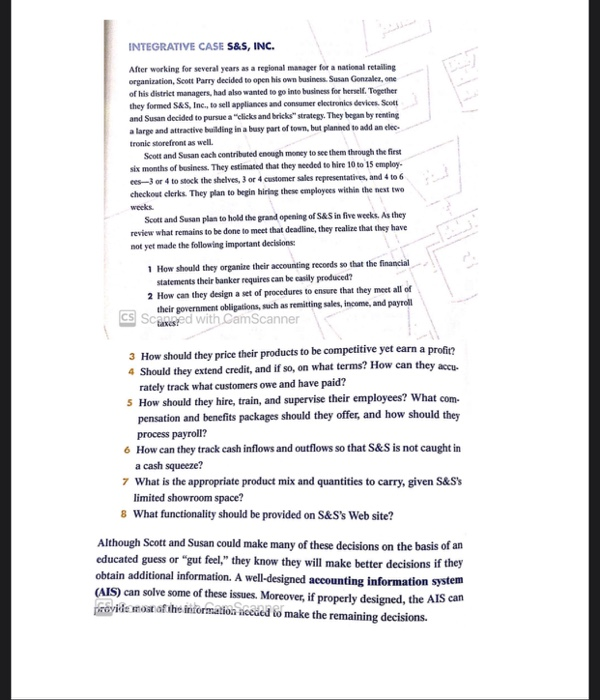INTEGRATIVE CASE S&S, INC. After working for several years as a regional manager for a national retailing organization, Scott Parry decided to open his own business. Susan Gonzales, one of his district managers, had also wanted to go into business for herself. Together they formed SAS, Inc., to sell appliances and consumer electronics devices. Scott and Susan decided to pursue a "clicks and bricks" strategy. They began by renting a large and attractive building in a busy part of town, but planned to add an elec tronic storefront as well Scott and Susan each contributed enough money to see them through the first six months of business. They estimated that they needed to hire 10 to 15 employ- ees-- 3 or 4 to stock the shelves, 3 or 4 customer sales representatives, and 4 to 6 checkout clerks. They plan to begin hiring these employees within the next two weeks Scott and Susan plan to hold the grand opening of S&S in five weeks. As they review what remains to be done to meet that deadline, they realize that they have not yet made the following important decisions 1 How should they organize their accounting records so that the financial statements their banker requires can be casily produced? 2 How can they design a set of procedures to ensure that they meet all of their government obligations, such as remitting sales, income, and payroll CS Sceaused with CamScanner 3 How should they price their products to be competitive yet earn a profit? 4 Should they extend credit, and if so, on what terms? How can they accu. rately track what customers owe and have paid? 5 How should they hire, train, and supervise their employees? What com- pensation and benefits packages should they offer, and how should they process payroll? 6 How can they track cash inflows and outflows so that S&S is not caught in a cash squeeze? 7 What is the appropriate product mix and quantities to carry, given S&S's limited showroom space? 8 What functionality should be provided on S&S's Web site? Although Scott and Susan could make many of these decisions on the basis of an educated guess or "gut feel," they know they will make better decisions if they obtain additional information. A well-designed accounting information system (AIS) can solve some of these issues. Moreover, if properly designed, the AIS can hvide most of the information seeded to make the remaining decisions







